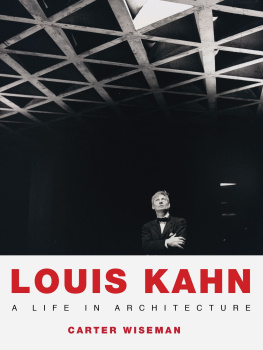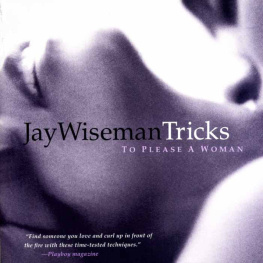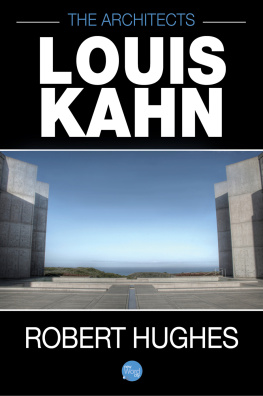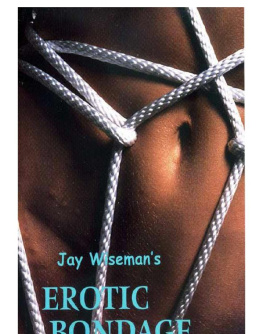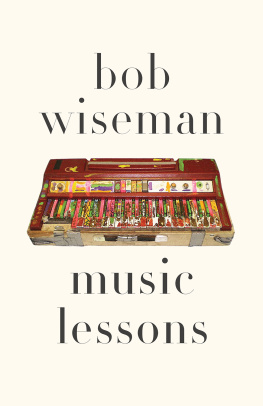Carter Wiseman - Louis Kahn: A Life in Architecture
Here you can read online Carter Wiseman - Louis Kahn: A Life in Architecture full text of the book (entire story) in english for free. Download pdf and epub, get meaning, cover and reviews about this ebook. publisher: University of Virginia Press, genre: Detective and thriller. Description of the work, (preface) as well as reviews are available. Best literature library LitArk.com created for fans of good reading and offers a wide selection of genres:
Romance novel
Science fiction
Adventure
Detective
Science
History
Home and family
Prose
Art
Politics
Computer
Non-fiction
Religion
Business
Children
Humor
Choose a favorite category and find really read worthwhile books. Enjoy immersion in the world of imagination, feel the emotions of the characters or learn something new for yourself, make an fascinating discovery.
- Book:Louis Kahn: A Life in Architecture
- Author:
- Publisher:University of Virginia Press
- Genre:
- Rating:4 / 5
- Favourites:Add to favourites
- Your mark:
- 80
- 1
- 2
- 3
- 4
- 5
Louis Kahn: A Life in Architecture: summary, description and annotation
We offer to read an annotation, description, summary or preface (depends on what the author of the book "Louis Kahn: A Life in Architecture" wrote himself). If you haven't found the necessary information about the book — write in the comments, we will try to find it.
Louis Kahn: A Life in Architecture — read online for free the complete book (whole text) full work
Below is the text of the book, divided by pages. System saving the place of the last page read, allows you to conveniently read the book "Louis Kahn: A Life in Architecture" online for free, without having to search again every time where you left off. Put a bookmark, and you can go to the page where you finished reading at any time.
Font size:
Interval:
Bookmark:
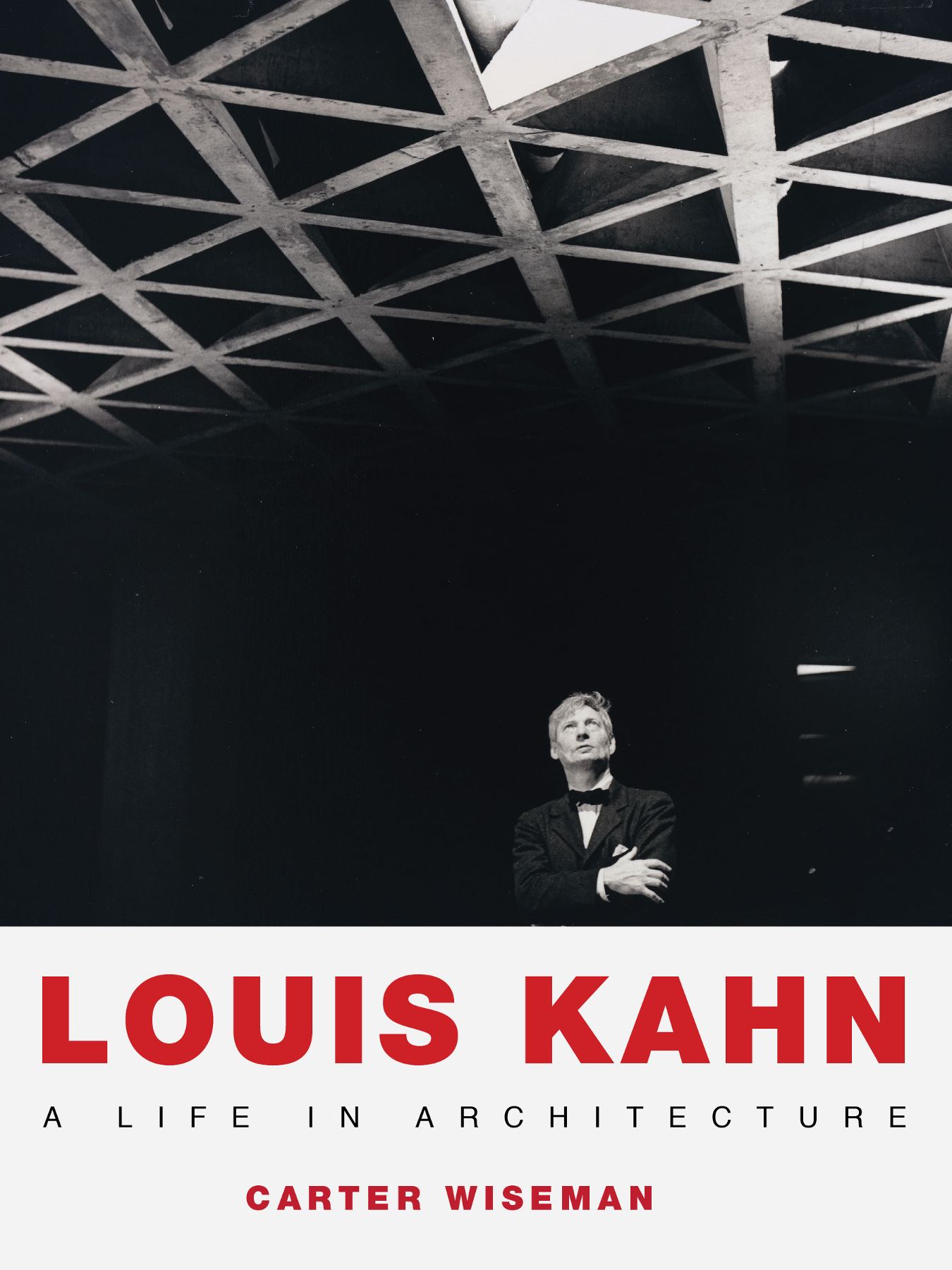
CARTER WISEMAN
UNIVERSITY OF VIRGINIA PRESS | Charlottesville and London
University of Virginia Press
2020 Carter Wiseman
All rights reserved
First published 2020
9 8 7 6 5 4 3 2 1
ISBN 978-0-8139-4497-5 (paper)
ISBN 978-0-8139-4750-1 (ebook)
Library of Congress Cataloging-in-Publication Data is available for this title.
Cover photographs: Lionel Freedman, gelatin silver print, Louis Kahn looking at his tetrahedral ceiling in the Yale University Art Gallery, 1953. (front; Lionel Freedman Archives [https://lionelfreedmanarchives.com], Courtesy of Maya Myers/Yale University Art Gallery); Franklin D. Roosevelt Four Freedoms Park, Roosevelt Island, New York City (back; 2012 Paul Warchol [https://warcholphotography.com/])
To my family, and my students
In a review of a retrospective exhibition of Louis I. Kahns career in 2016, a leading American architecture critic referred to the shadow his work continues to cast on the architectural profession. The choice of words was apt. Kahns legacy involves more than conventional influence or impact, and it is devilishly difficult to analyze. Few architects have had the aesthetic courage to imitate Kahns work, and none of those who did have matched their source of inspiration. Buildings designed by many of Kahns contemporaries can be almost instantly dated through their forms or materials. Ludwig Mies van der Rohes glass-and-steel Seagram Building in New York City (1958) is an icon of its day. Paul Rudolphs bush-hammered concrete Art and Architecture Building at Yale University is instantly recognizable as a work of the early 1960s. Robert Venturis historicist house for his mother is unmistakably 1964. I. M. Peis imposing East Building of the National Gallery (1978) is equally a creation of its time. Kahns buildings are not so easy to place in the chronology of modernism. There are many reasons for this, but the main one is that they are products of a creative imagination informed not only by academic training and deep historical understanding, but also by an immeasurable aesthetic intuition.
The shadowy nature of Kahns legacy is compounded by his famously cryptic pronouncements, which were recorded by students and followers who were sometimes unsure themselves of what the architect meant when he uttered them. Take his declaration, The structure of the room must be evident in the room itself. Structure, I believe, is the giver of light. The claim, like so many others Kahn made, is open to endless interpretation, but a surprising number of Kahn followers will insist that they alone understand what he meant.
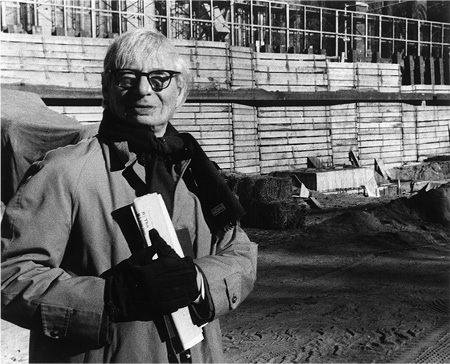
FIGURE 1. Louis I. Kahn on the construction site of the Yale Center for British Art. (Manuscripts and Archives, Yale University Library)
Another obstacle to a thorough understanding of Kahns work is his unusual adult biography. He was married to the same woman for forty-four years, but he had several extramarital relationships, two of which produced children. The happily married wife of one of Kahns clients declared in her husbands presence that Kahndespite his short stature (he was 5 6), the thick glasses he wore late in life, and facial scarswas the sexiest man I ever met.
As time passes, however, one has to wonder how relevant the personal lives of great artists are to their art. While early experiences may make lasting marks on any individual, linking an artists mature life and work carries high risks of misinterpretation, and is probably best left in the realm of speculation.
We have long known that Frank Lloyd Wright was an unfaithful husband and failed to pay his debts. But can we connect that to the horizontality of his Prairie-style buildings? More recently we have learned that Le Corbusier, one of the pioneers of architectural modernism, eagerly associated with the Vichy regime in France, something for which many people were executed.
One might say that Kahn, because he was at once charismatic and given to mystical-sounding pronouncements, inadvertently allowed his supporters to make of him a vessel for their interpretations. While it is reasonable to wonder if his physical homeliness drove his pursuit of beautiful women, it is harder to locate any mark of such personal insecurity in the shaping of his buildings. At least one former colleague of Kahns has suggested that there was a relationship between Kahns facial scars and his desire to leave imperfections in his buildings. The suggestion is intriguing, but it cannot be documented, and therefore tends to obscure an appreciation of the work.
A more productive measure of Kahns impact is the care with which the owners of his buildings have looked after them. Not all of their efforts have been successful. The government center in Bangladesh has suffered from physical deterioration and the effects of political turmoil. The impoverished nation has not been able to maintain its monument as it might have liked, and concerns about security have forced the government to ban visitors from the public spaces that were central to Kahns original democratic concept. Nevertheless, the Bangladeshis continue to revere the building, and conservation efforts have begun. An image of it remains on their currency. In India, the Institute of Management that Kahn designed for the city of Ahmedabad has been expanded to mixed reviews, while the original buildings were damaged by an earthquake in 2001 and have since been subject to insensitive upkeep. Indeed, Kahn had personally trained local bricklayers how to lay their mortar to create subtle shadows, but some years ago the walls were given a coat of red paint, obscuring the architects delicate intent. At least plans to demolish Kahns main buildings have been abandoned, and a renovation campaign is in the planning stages.
The story has been happier in the United States. Kahns addition to the Yale University Art Gallery has been restored to its original condition. His Trenton Bath House in New Jersey has been preserved, and the Alfred Newton Richards Medical Research Building at the University of Pennsylvania is under restoration. The Salk Institute for Biological Studies in La Jolla, California, perhaps Kahns most iconic creation, has also been renovated according to the original design. A plan to add to the Kimbell Art Museum in Fort Worth, Texasby essentially cloning the original vault-like formswas defeated with the help of protests by members of the Kahn family and an international consortium of architects and historians. The museum eventually commissioned a nearby addition, designed by Renzo Piano, which is deferential to the original, even though it compromises the original approach to the museum.
Phillips Exeter Academy in New Hampshire committed $40 million to rectify the failures in the weatherproofing of Kahns library there, but only after defeating an effort by some alumni to demolish the building and replace it with something more efficient. The library is now considered the jewel of the campus and receives legions of visitors more interested in Kahns architecture than the school that commissioned it.
Surely the strongest example of how the users have come to appreciate Kahns work is the Yale Center for British Art. By 2010, the YCBA was in need of repairs that any building of its age requires. But routine renovation was out of the question. Instead, Yale closed the building for sixteen months and invested $33 million to maintain the spirit of the original, down to the new linen wall coverings and the natural-wool carpets. A few changes were made in the allocation of space, but every effort was made to preserve what had come to be appreciated as the most important work of art in the collection: the gallery itself.
Next pageFont size:
Interval:
Bookmark:
Similar books «Louis Kahn: A Life in Architecture»
Look at similar books to Louis Kahn: A Life in Architecture. We have selected literature similar in name and meaning in the hope of providing readers with more options to find new, interesting, not yet read works.
Discussion, reviews of the book Louis Kahn: A Life in Architecture and just readers' own opinions. Leave your comments, write what you think about the work, its meaning or the main characters. Specify what exactly you liked and what you didn't like, and why you think so.

